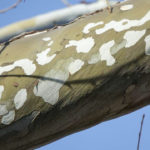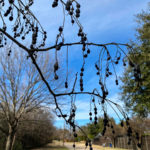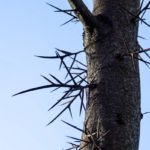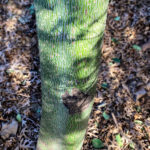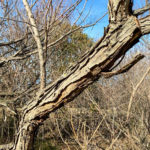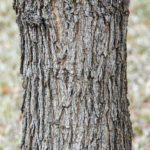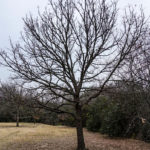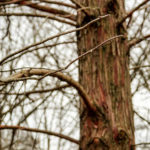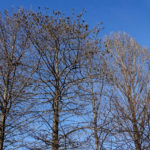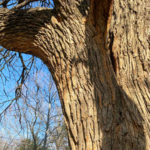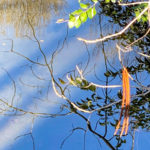Joe’s Creek and the Northaven Park lands are graced with a variety of native and non-native trees and shrubs. Identification can be challenging in winter due to the absence of foliage; however, several species have distinctive bark or other features that offer excellent clues. With the aid of descriptions drawn from Texas Trees, A Friendly Guide, by Paul W. Cox and Patty Leslie, one can learn to recognize many of these species, and also learn how earlier generations of Texans valued and used trees in their daily lives. In the spirit of this excellent guide, below is a friendly (and potentially rewarding) quiz that one can take from an armchair observation point while the weather is not so friendly!
Bonus: A brand new copy of the book will be awarded to the first NPNA neighbor to correctly identify all 10 photos. See the end of this post for the winner and a link to the answers.
- This tree’s protective measures – in theory developed during the Pleistocene era against megafauna (like the Mastadon) – prove less effective in the current day against foraging deer in parts of its range.
- Although its non-native, and can be invasive, this tree was sometimes a landscape choice for its large 3 lobed leaves, 12 inches in width, that provide substantial shade.
- The distinctive shape of the crown of this large native is more evident in the winter.
- Among the oaks, this variety features a coarse bark and strong branch structure. An excellent landscape choice.
- The smooth bark of this tree is one of its most distinctive features.
- Branching patterns are one key to distinguishing between two varieties of this tree, since the foliage and bark are very similar.
- A natural along the creek bed, this tree is easily identified by its foliage which can turn bright yellow in the fall. In winter, look for the furrowed bark, which forms deep flakes on old trees, and its relatively low branches.
- Only ringtail cats typically eat the berries of this small tree, which may explain why they remain on the branches here in fall and winter.
- A distinctive color in the coarse bark is a good clue to this tree’s common name.
- The pods of this tree, which also is host to a caterpillar sought after for fishing, can be used to weave small baskets – although youngsters of a prior century had another use, which gave the tree one of its common, or nicknames.
Click on each photo for a larger view.
| Native and Non-native varieties that can be found in the Park & along the Creek: | ||
| Southern Catalpa Cedar Elm Chinaberry Chinese Parasol Red Oak American Elm Chinese Tallow Japanese Ligustrum |
Chinkapin Oak Bois d’Arc Gum Bumelia Burr Oak Black Walnut Crepe Myrtle Honey Locust Bald Cypress |
Black Willow Hackberry Sycamore Eve’s Necklace Mexican Buckeye Juniper SoapBerry Pond Cypress |
We are pleased to announce the winner of the Friendly Tree Quiz: Todd England. Thanks to all who attempted the quiz. View the answers here.

